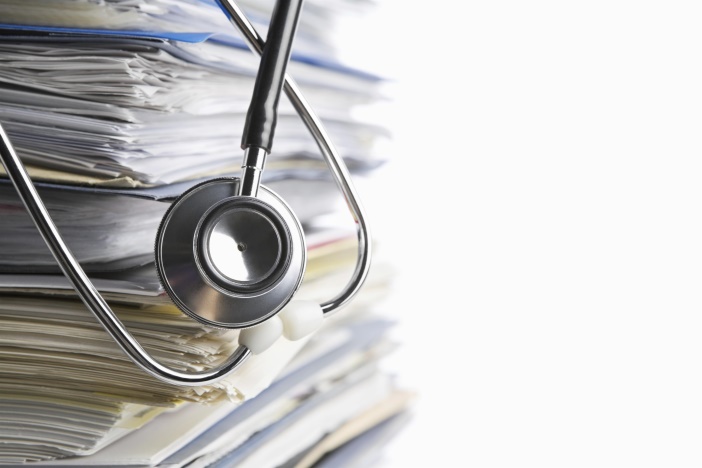MEDICAL ERRORS IN NURSING: PREVENTING DOCUMENTATION ERRORS
The importance of proper documentation in nursing cannot be overstated. Failure to document a patient’s condition, medications administered, or anything else related to patient care can result in poor outcomes for patients, and liability issues for the facility, the physician in charge, and the nurse(s). Let’s look at an example.
A Case of Missing Documentation : In Susan Meek. V. Southern Baptist Hospital of Florida, Inc. d/b/a Baptist Medical Center, the patient (plaintiff) was admitted to the hospital for a hysterectomy. She developed bleeding after surgery and was admitted to the radiology unit for uterine artery embolization (UAE) to stop the bleeding. Although the physician ordered the nurses to perform frequent leg examinations to mitigate the risk of diminished blood flow and nerve injury (a known complication of UAE), the patient claimed the exams were not performed, based on lack of documentation. The patient sustained nerve damage after a massive clot was removed in the external iliac artery. The case resulted in a $1.5 million verdict.1
There is no way to know whether the nurse(s) responsible for the patient had in fact performed leg examinations, because the supporting documentation was simply not there.

Nurses have a lot to contend with today-from electronic health records (EHRs) with page after page of forms and boxes to tick and fill in, to overcrowded conditions at healthcare facilities, to long and exhausting shifts. Environmental conditions, distractions, lack of training, infrastructural problems, and lack of communication can all lead to documentation errors. Nurses learn proper documentation procedures during their initial training, but nurse CE courses can provide important refreshers and updated information pertaining to documentation.
Ahead we’ll define what proper documentation is and why it’s so important, explore common documentation errors, and look at some dos and don’ts of proper documentation.
DEFINING PROPER DOCUMENTATION AND ITS IMPORTANCE
Nurses are on the front lines of patient care. Their written accounts are critical for planning and evaluation of medical interventions and ongoing patient care. Nursing documentation must provide an accurate, complete, and honest account of the events that occurred and when. Good documentation is:
- Accurate
- Factual
- Complete
- Timely (current)
- Organized
- Compliant with healthcare laws and facility standards
This applies to nursing documentation across every type of practice setting-from clinics, to hospitals, to nursing homes, to hospices.


Proper documentation serves many purposes for patients, physicians, nurses and other care providers, and families.
Thorough, accurate documentation is important for communication and continuity of care-everyone involved in the delivery of care requires information about the patient.
Documentation is important for quality assurance-the information contained in patient charts is often used to evaluate the quality of service and the appropriateness of care delivered by nurses.
Proper documentation also establishes professional accountability, demonstrating a nurse’s knowledge and judgment skills, and it can help facilities assess funding and resource management.
Documentation is also very important for legal reasons-patient records are frequently used as evidence in court.
10 COMMON DOCUMENTATION ERRORS
#1: Not dating, timing, and signing entries
Every single entry should have the date, time, and the name of the person who entered it. Unless you’re working with an EHR/PMS that enters this information automatically, you must enter it every time. On paper charts, indicate the date and time, along with your first initial, full last name, and your title (RN, LPN, etc.). When your documentation continues from one page to the next, write your name on each page, along with the date and time, and indicate “continued from previous page” on all subsequent pages.
#2: Writing sloppily or illegibly
This requires little explanation. Sloppy writing can result in confusion and communication problems that, at best, can lead to inefficiencies and, at worst, could cost patients their lives. Sloppy writing can also interfere with a nurse’s defense in a malpractice suit.
#3: Not documenting omitted medications or treatments
Medication and treatment omissions happen, especially when your facility is short staffed or when you’re pressed for time because you’re working a double shift. Regardless of the circumstances, you are still accountable for these oversights. Always document omitted medications or treatments along with the reason for the omission and your signature.
#4: Leaving blanks on forms
This leaves the reader wondering if care was delivered and not recorded, or not delivered at all, as in the legal case we looked at earlier. Nurses need to draw a line through blanks that are not applicable on documentation forms, and initial them.
#5: Adding late entries
Anyone who has ever tried to briefly memorize a phone number before dialing it knows that the information can slip away within seconds. Failing to record actions taken and other information immediately or very soon after the event can lead to lost detail-especially when it comes to numbers-and ultimately errors down the line that could negatively impact the patient. Clearly state the date and time of the late entry, indicate the actual time the care or observation occurred, and mark it as “late entry.”
#6: Documenting subjective data
Using terms like “demanding,” “grumpy,” and “irritating” to describe a patient reveals more about the nurse’s attitude than the patient. In cases where the patient has a bad outcome, terms like these on a chart will call into question the kind of care the nurse provided.
#7: Using inappropriate abbreviations
Avoid using abbreviations that can be misinterpreted, and result in confusion and errors. For example, using “D/C” for discharge can be confused with discontinuing medications. Always write “discharge.” Avoid abbreviations that are non-medical, which can result in interpretation errors.
#8: Accepting incomprehensible orders
Never accept questionable or incomprehensible orders. If you don’t understand the orders, or feel they are not in the best interest of the patient, question them every time. Remember that you are also liable for patient outcomes, even when following someone else’s orders.
#9: Failing to document new symptoms or conditions
You should document any new condition where appropriate, including the time of occurrence, the action you took, and the patient’s response. This includes new abrasions, cuts, and pressure marks, falls, bumps, elevated temperatures, seizures, pressure ulcers, unusual behaviors, diarrhea, changes in bowel habits, changes in vital signs, etc.
#10: Entering information into the wrong chart
This error can happen easily, especially with electronic records. Ultimately the problem occurs when a nurse isn’t paying attention to the patient’s identity. Always address your patient by name and ensure you have right electronic record or chart in front of you before entering information.


DOCUMENTATION DOS AND DON’TS
- Don’t take shortcuts in electronic records systems, including copying and pasting medical records, which can lead to the carryover of inaccurate or outdated information. It takes more time, but it’s important to type out your notes every time.
- Do make sure you’re charting on the correct record. With so many patients moving through a typical facility, it’s easy to start documenting on the screen in front of you, only to realize you’re in the wrong patient’s chart.
- Don’t delay documentation. It’s too easy to forget details if there is a delay between the time you took an action and recorded it. This can lead to a host of problems.
- Don’t document medications or treatments before they are administered or completed.
- Do use the patient’s own words, gestures, and non-verbal cues as much as possible, which helps paint a picture of what you encountered.
- Don’t use vague terms, such as “fair” and “normal.” Be clear, concise, and specific in your documentation.
- Do correct errors. Draw a straight line through incorrect entries, and write “error” above them. Initial and date the correction. With electronic records, this may be trickier-that’s why it’s important for facilities to have procedures in place for correcting entries. In general, you should make a new entry along with the date and time. Indicate that you are correcting an error in a previous entry, and point clearly to that entry. The bottom line: It should be very obvious to readers which entry you are correcting.

STRANGE DOCUMENTATION ENTRIES
Nurse entries can be confusing, intriguing, and sometimes downright comical. Grammar and syntax problems are frequently at the heart of documentation bloopers. eHereConsider the following:
“Patient was alert and unresponsive.” Was the patient alert and unconscious simultaneously? Or perhaps the patient was alert, but refused to or couldn’t respond verbally to the nurse?
“Patient has chest pain if she lies on her left side for over a year.” The message here seems to be that the patient has chest pain if she lies on her left side. She has experienced this for more than a year.
“The skin was moist and dry.” Huh?
“She is numb from her toes down.” What body part lies beneath the toes?
“The patient has done well without oxygen for the past year.” Now, that’s quite a talent.
These flubs illustrate perfectly the need for clear, concise documentation. Nurse educators should emphasize the importance of proper grammar and syntax in documentation, and instruct nurses to cross-check their notes with another healthcare professional if they suspect their entry is unclear. Proper documentation techniques should be part of any registered nursing or certified nursing assistant training program.
